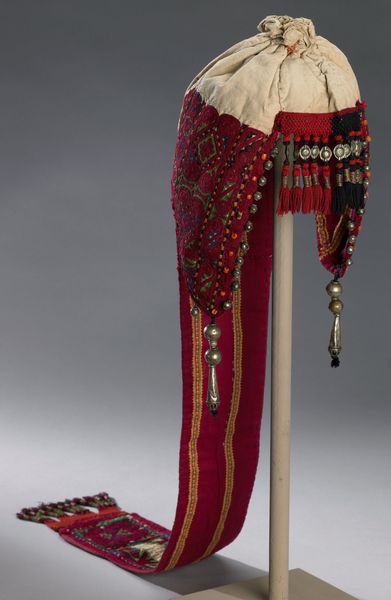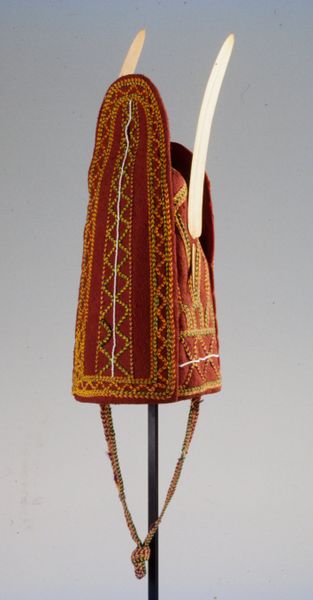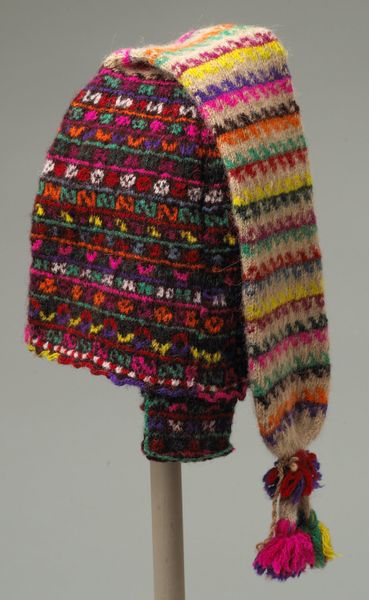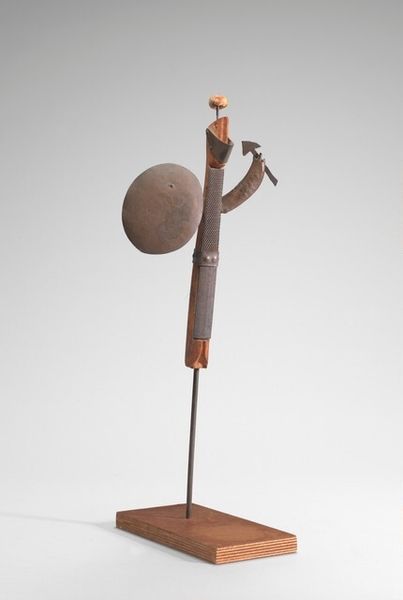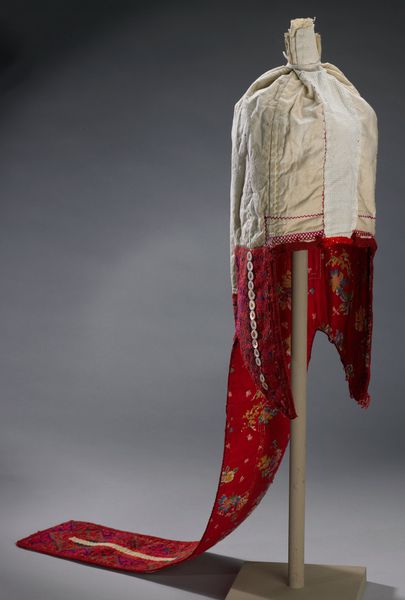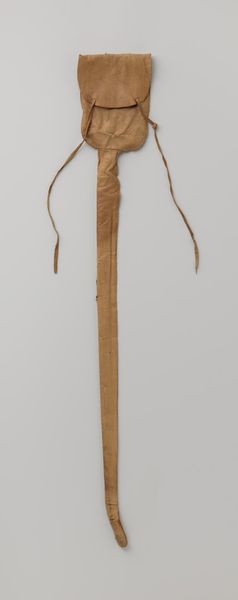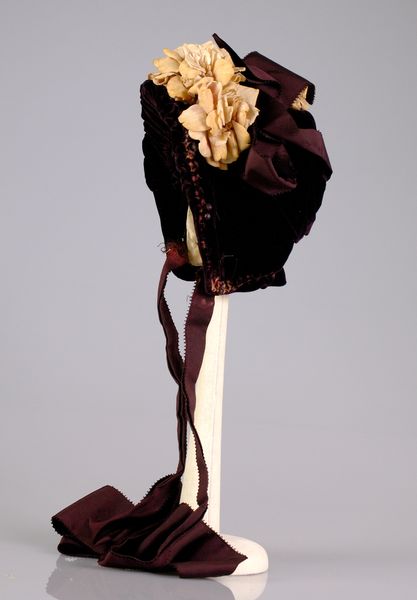
mixed-media, assemblage, textile, sculpture, installation-art
#
mixed-media
#
contemporary
#
assemblage
#
sculpture
#
textile
#
fashion and textile design
#
sculpture
#
installation-art
Copyright: Yinka Shonibare,Fair Use
Curator: Look at this striking piece! This is Yinka Shonibare's "HIGH TEA I" created in 2015, a mixed-media sculpture incorporating textiles, assemblage, and sculpture. Editor: It’s imposing. Initially, I'm struck by the height and the stilted figure. There’s an immediate sense of precariousness in that form and I’m curious about the making involved here, not least getting those fabrics to cooperate. Curator: The figure, poised elegantly, substitutes its head with a globe—a motif Shonibare frequently uses. It suggests a dialogue about global power and post-colonialism. Notice how the Dutch wax fabrics add to this complexity. Editor: Absolutely. Thinking about the materials – the wax fabrics, the globe, and what appears to be hand-carved wooden stilts – they are loaded with specific histories of trade and labor, especially in relation to colonial legacies. The deliberate juxtaposition of these elements, the craftsmanship that shapes them, really amplifies its historical weight. Curator: The very act of partaking in "high tea" has become an emblem for British colonialism, yet the vibrant African prints complicate that narrative. It raises poignant questions about cultural appropriation, exchange, and identity. Editor: Exactly. And the height, physically placing the figure above us, makes me wonder about that positioning, the labour necessary to manufacture those stilts. Are we meant to examine that elevation or interrogate its inherent instability given that those fabrics originated elsewhere, produced by somebody? Curator: Perhaps. What do you make of its timeless quality despite the historical allusions? I find myself considering how current power structures echo throughout our contemporary society. Editor: I think that Shonibare masterfully weaves these historical threads with contemporary dialogues, leaving us contemplating the means through which histories are woven together, reminding us that these material processes always carry with them a narrative. Curator: It's certainly an intricate, multi-layered piece that keeps inviting us back into that discussion of history and craftsmanship. Editor: A perfect example of the stories our making processes hold if we decide to engage more directly with material legacies!
Comments
No comments
Be the first to comment and join the conversation on the ultimate creative platform.

